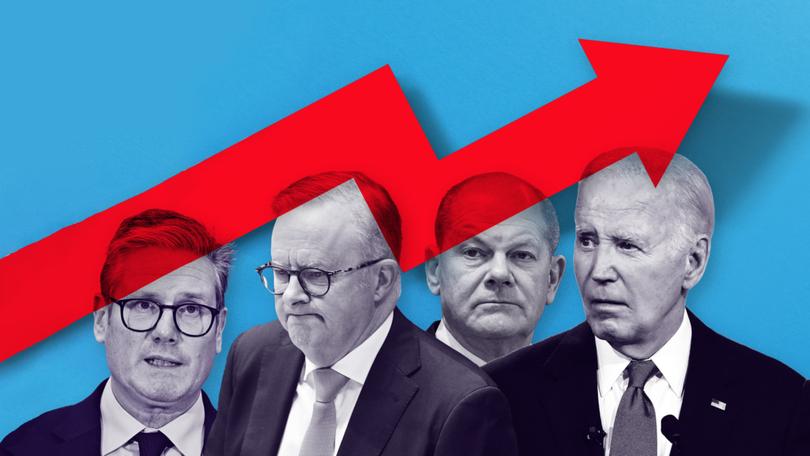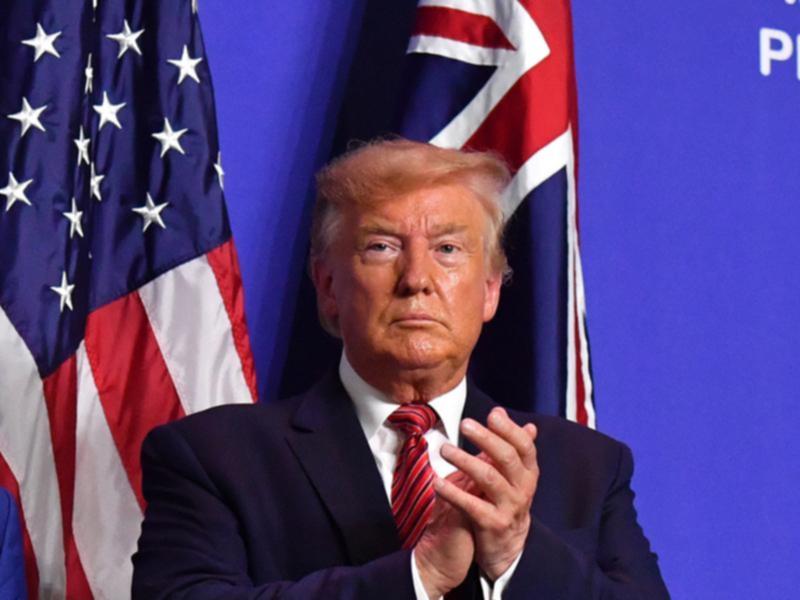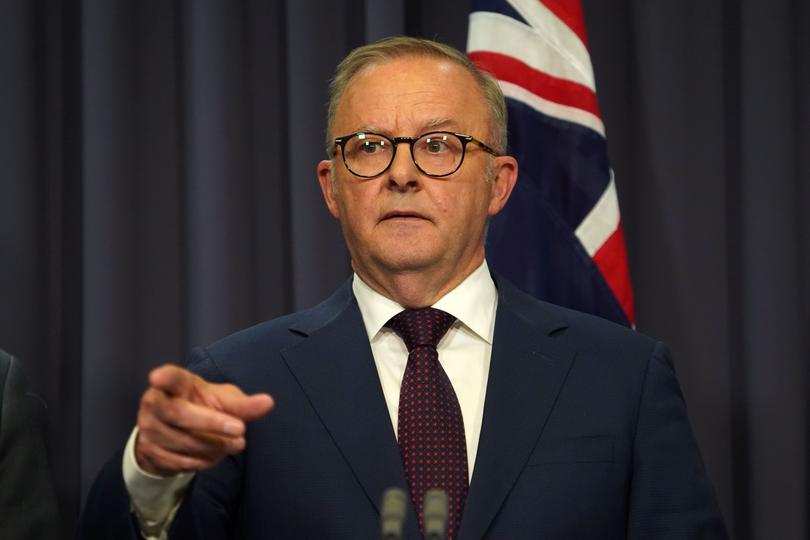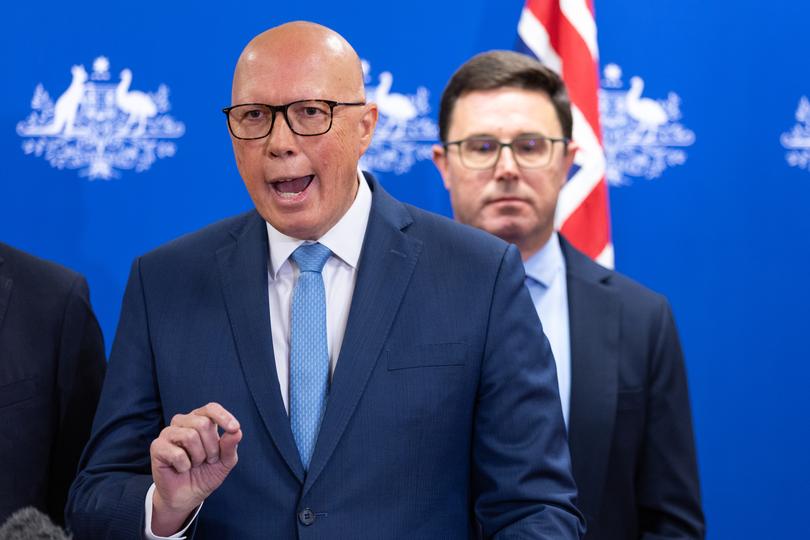LATIKA M BOURKE: Australia will test if left-wing governments are becoming one-termers

The spectacular political resurrection of Donald Trump in 2024 turned on its head the idea that Trumpism, and MAGA, were an aberration in the political cycle.
In fact, 2025 offers the possibility that Trump and the growth of the populist right is a new norm and that the new political orthodoxy facing the Western world is a political battle between the right and far right as opposed to the right and left.
When Joe Biden swept Trump from power in 2020, the world heaved a sigh of relief. Europe could return to its status quo of banking on the US operating as its security guarantor, as it did with the Middle East for example, where the US and UK, lately joined by Israel, have been the only countries willing to use military force to attack Yemeni sites to try and degrade the Iranian-backed Houthi attacks on commercial shipping in the Red Sea.
Sign up to The Nightly's newsletters.
Get the first look at the digital newspaper, curated daily stories and breaking headlines delivered to your inbox.
By continuing you agree to our Terms and Privacy Policy.But 2024 tore away that security blanket. In Australia’s case, the re-election of Trump injects a political dimension of insecurity into the future of the AUKUS nuclear submarine project. All the political architects of that plan have been felled by their voters or colleagues.
Also up for debate is the notion that the electoral pendulum will swing, cyclically, back and forth between left and right.
Because as it turned out, it was Joe Biden who proved the one-term aberration, and not Donald Trump.
Like Boris Johnson in the UK, Trump oversaw a realignment of the voting public, combining migrant, black and working-class voters.

The question is whether this trend is structural and a global phenomenon that spells a more permanent decline for the left as the electorate shifts right, populist and towards other minor or independents.
Two elections scheduled for early 2025 will provide preliminary evidence to test this theory.
The first will come in Europe when Germany heads to the polls for an election on February 23.
Polls predict the hapless left-wing Chancellor Olaf Scholz will be swept from power and with it his failed traffic-light coalition government which collapsed late last year comprising Scholz’s Social Democratic Party (SPD), the Free Democratic Party and the Greens.
The CDU led Germany’s federal government between 2005 to 2021 and lost after Angela Merkel’s resignation.
Frederich Merz, the party’s new leader, is poised to return the centre-right party to power – it is currently polling at 31 per cent according to Wahlrecht.
If Merz becomes Germany’s next Chancellor, that would make Scholz’s left-wing government a one-termer, just like Biden.
Equally notable, is that currently polling second place is not Scholz’s SPD or a left-wing party but the Alternative for Deutschland far-right party which has been backed by Trump’s would-be vice-president Elon Musk.
The AfD is currently polling at 21 per cent compared to Scholz’s SPD at 16 per cent.
So Germany’s centre-right is threatened no longer by the left by by the far right.
These conditions are replicating in Britain, which although is not scheduled to head to the polls for another four years, is already producing a similar one-term climate under the leadership of the floundering Labor government led by the uninspiring Sir Keir Starmer.
Notably, Nigel Farage’s Reform party leapfrogged the Liberal Democrats for third place in a giant MRP poll conducted on the weekend by the think tank More In Common for the Times of London.
The new Conservative leader Kemi Badenoch has spent more time taking the fight to Farage than Starmer, as demonstrated by her online row last week over Reform’s claims that its membership numbers exceed 130,000 and it is they, not the Tories, that is the true opposition.
The British example, while worth noting, is less immediately indicative given how far away the next election is likely to be but as it stands today, Starmer does not signal that he is a politician capable of grasping the scale of change he needs to deliver both in his style and more importantly nationwide reform to arrest the complete collapse in public support for Labor, which was already elected to govern on its lowest-ever vote share of 33.7 per cent.
Which brings us to Australia.
Labor has historically had a lot more time in power than its one-time-Jeremy-Corbyn-loving sister party in the UK because it governs from the right of its party, this is even the case under Anthony Albanese even though the Labor leader is from the left faction.

Like Starmer, Albanese also won the prime ministership with Labor’s lowest-ever vote share — 32.6 per cent. Some in the party even think the government’s primary vote could plummet this year and record a 2 in front of it – we’ll see.
But like his friend Olaf Scholz, Albanese’s underwhelming performance in the job has cost him voter support.
Opposition Leader Peter Dutton has led the Coalition to an astonishingly equal place in the polls, and in Redbridge’s most recent poll was leading two party preferred 51-49 per cent despite the Coalition’s near-extinction defeat just three years ago.
But unlike Scholz, Albanese benefits from compulsory voting and preferential system which has kept Australian election results in the centre and power in the hands of the major two political parties. Australia might have flirted with its own Trumpism in Pauline Hanson at the turn of the century without it.
But Australia is not completely immune from the European-style fracturing of the vote.
In 1951 support for the major two was at 98 per cent compared to the lowest-ever combined level of support at 68 per cent in 2022.
The splintering in the vote is not a new trend but currently, the right and far right seem to be rebounding and benefiting from it better than the left.
Indeed, Mr Albanese’s first-term goal was to fortify incumbency to ensure that Labor’s time in power would be long-term in the way that 2007 Ruddslide promised to be before the infighting led to that government’s demise after just two terms.
But despite an unusually internally harmonious period in government, Albanese looks even less sure of being able to deliver Labor a second term in government, even in minority, than Kevin Rudd did before he was rolled for Julia Gillard in 2010, who returned a hung parliament result and governed in a chaotic minority government until 2013.
The prospect of a Peter Dutton prime ministership — likely in minority given it would require a staggering 21 seats to return the Coalition to majority (Rudd won 23 in and Bill Shorten won 15 in 2019 for context) – is a reality that no one would have forecast in May 2022, least of all Labor who were overjoyed that the Liberals had elected him leader.

Should Labor be booted out, it would be truly historic – in fact for the first time since the Great Depression and it will tell us if left-wing governments are predominately being voted in as political placeholders to replace tired long-serving conservative governments, who voters appear readier to forgive after one-term in opposition as is likely in the case of Germany.
Much has been written about the incumbency, post-COVID inflation curse killing off political leaders, including Biden, somewhat undeservedly. There is no doubt these factors are weighted against the Australian Labor Party as it gears up to ask the public for a second chance.
But it’s worth acknowledging that two of the leaders who have managed to steer their jurisdictions through the pandemic and be re-elected, albeit with reduced support, India’s Narendra Modi and the European Union’s Ursula von der Leyen, hail from the right.
With Justin Trudeau, (he has served two terms since 2015) in Canada on political life support, it’s possible that by the end of the year, the only left-wing leader in the Five Eyes countries, USA, UK, New Zealand and Canada, will be Britain’s Keir Starmer.
So in 2025, Australia is in a unique position to determine whether the left is entering a phase of political isolation globally or whether it can keep that particular contagion offshore.

